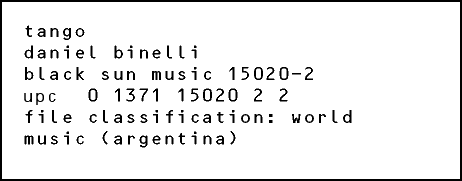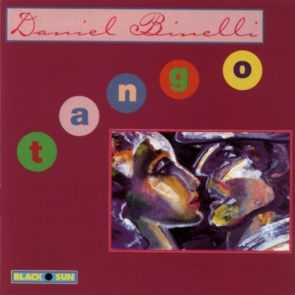|
|
||||||||||||||||||||||||||||||||||||
 
Tango ist weit mehr als ein in Argentinien
um 1900 entstandener Tanz. Tango ist ein Lebensgefühl,
Begegnung der afrikanischen und europäischen Kulturen,
ein einzigartiges musikalisches Genre. Bandoneonvirtuose
Binelli demonstriert mit seiner Gruppe die ganze Bandbreite.
Die Kompositionen/Arrangements für Bandoneon, Piano,
Violine, Cello, Saxophon, Flöten, Kontrabass und
Schlaginstrumente) sind von Binelli und Astor Piazolla.
the projectTango! The Latin American ballroom dance usually comes to mind when you hear this word pictured with expressive emotions. What about the music and rhythm that inspired this dance style centuries ago?Originating in Buenos Aires, Argentina, the tango can be traced back to the seventeenth century with evident influences from the havanera, tango andaluz, and milonga (creole/gaucho dance) and candombe (African-Argentine music) contributing to the early rhythmic development. Early in the nineteenth century, European immigrations to Argentina greatly influenced the music and dance of the tango. The sad lyrics of early tangos reflect this. Tango music has since been influenced by other waves of music from Europe and the United States. Astor Piazolla, toward the end of his life, brought jazz elements into the tango. Today, Argentine tango music is largely identified with the bandoneón—a portable accordion with buttons (instead of keys). However, until the early 1920s the bandoneón was not a frequent or obvious instrument in the tango bands. The primary instruments were the guitar, drum and flute. The use of aluminum frames allowed the bandoneón to be even lighter, and more importantly, much louder. Producer, composer and percussionist the artistsA researcher of Argentine music, Daniel Binelli has become one of the foremost in–depth connoisseurs of the tango in all its styles—styles that date from the beginning of the century up to present day. Binelli is an internationally reknowned composer, musical arranger, bandoneónist and Argentinian musical director. Considered the best instrumentalist of the tango genre (Argentina), Binelli is the honored recipient of the 1995 Konex Prize.From 1968 through 1982, Binelli toured as a member of the Orchestra of Osvaldo Pugliese as a bandoneónist and musical arranger. In 1989, Binelli was invited by Astor Piazzolla to be a part of his New Tango Sextet, and toured with Astor Piazzolla through Europe and Latin America. He has also performed with Paquito de Rivera in Buenos Aires, and the Orchestra of Dizzy Gillespie. Members of the Daniel Binelli Septeto include: Sergio Balderrabano on piano; Julio Graña playing violin; Diego Sanchez on the cello; Oscar Victor Carnero on the double bass; Marcelo Chiodi playing the tenor saxophone, flute and piccolo flute; and Hector (Cacho) Tejera rounding out the group on percussion. biographytracklist
|
||||||||||||||||||||||||||||||||||||
|
|
||||||||||||||||||||||||||||||||||||
 |


